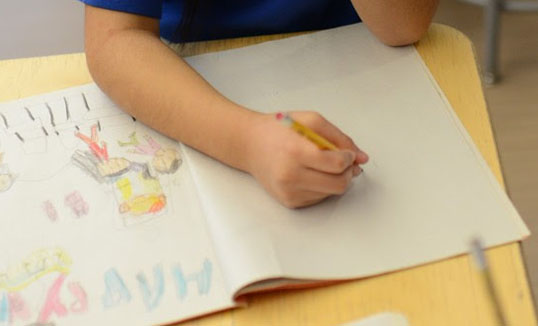TEACHING AT-RISK YOUTH IN TRAUMA-SENSITIVE EDUCATION ENVIRONMENT
By Bill Baccaglini, President and CEO,
The New York Foundling
One of the most pressing education policy challenges our country currently faces is the persistently huge disparity in academic achievement between children growing up in poor, underserved communities and children in communities with the resources to meet their educational and recreational needs. That education gap is even wider for children who are also members of our most fragile student population: those in the child welfare system.
The New York Foundling is one of New York’s oldest and largest child welfare organizations and several years ago, we began an effort to develop an educational model that provided these children with the array of services they need and that incorporated our knowledge of child welfare into their school day. Seven years ago, we launched Mott Haven Academy, a K-5 charter school in one of the nation’s most disadvantaged communities. Two-thirds of our students are in the child welfare system, with the remaining third from the surrounding community.
State test results just in show strong evidence that our approach is working.
- Overall, in both English and Math, the percentage of students with passing scores at Haven Academy was triple the percentage in the surrounding community school district.
- Our students’ performance also exceeded the averages for New York City, New York State and other charter schools.
Most telling, even child welfare children at Haven Academy outperformed students in the community school district – students who may or may not have encountered the child welfare system.
- In English, the percentage of child welfare students at Haven who passed the exam was double the percentage in the school district as a whole.
- In Math, the percentage passing was two and a half times that in the school district and exceeded the overall City and State averages.
What are we doing to achieve these results?
We’ve found that children do better when educators and child welfare professionals work together, providing critical and comprehensive care to students. This collaboration enables us to develop and implement intervention plans in a timely manner.
For example, when a student is absent, the teacher notifies the school social worker who, based on the student’s history, determines if a child’s caseworker should be notified. This follow-up often includes home visits by school personnel and case workers. And since we offer health and dental services on the premises, if a child needs these services, we can integrate the visits into the school day, so the student doesn’t need to miss a day of school every time there’s an appointment.
We also utilize a trauma-sensitive model, giving students access to advanced counseling services and a school culture designed to educate them academically and to teach them how to perform socially and cope with whatever trauma they may experience.
This requires that teachers and staff receive intensive training on how to interact with children. For example, they recognize that when students are sensitive to physical touch, it may be because of a history of abuse – and that they need to engage students without physical contact. Teachers and staff are also very intentional about the language, habits, routines and interactions they exhibit.
By emphasizing the rewarding of positive behaviors, leveraging student strengths to curb unproductive behaviors and creating a consistent adult climate, we can encourage children to make responsible decisions based on outcomes they can predict. Traditional public education models are built to educate the majority of students. They aren’t equipped, and understandably so, to address the special needs and circumstances of students in the child welfare system – many of whom have experienced trauma, been physically or sexually abused or seriously neglected. Creating a model that reaches these children is crucial – without it, they are far more likely to struggle with unplanned pregnancies, drug abuse, incarceration and long-term dependence on government-funded services for food, healthcare and housing in the future.
We believe that in bridging the gap between educators and child welfare professionals to create trauma-sensitive schools, we can also bridge the education gap between at-risk youth and students of the general population nationwide. Our experience at Haven Academy is showing that it can work.
Please visit The Foundling’s Mott Haven Academy by Clicking Here.



